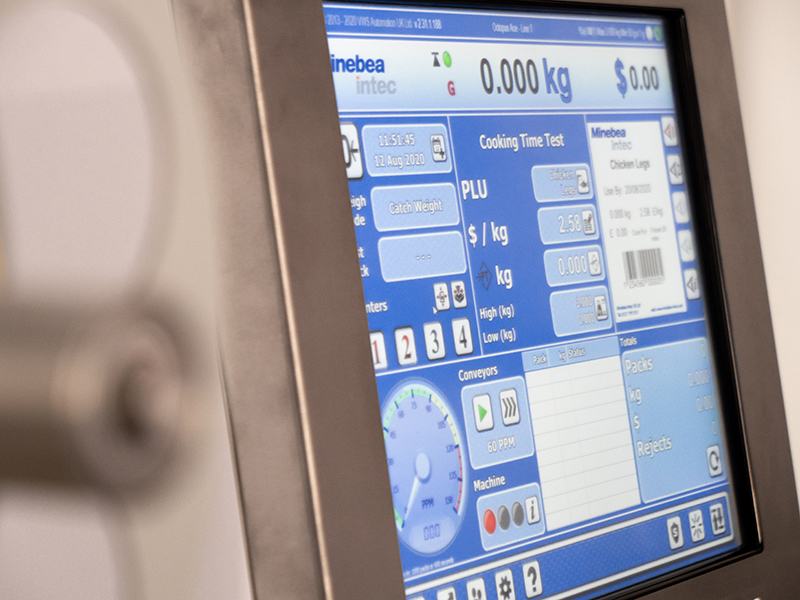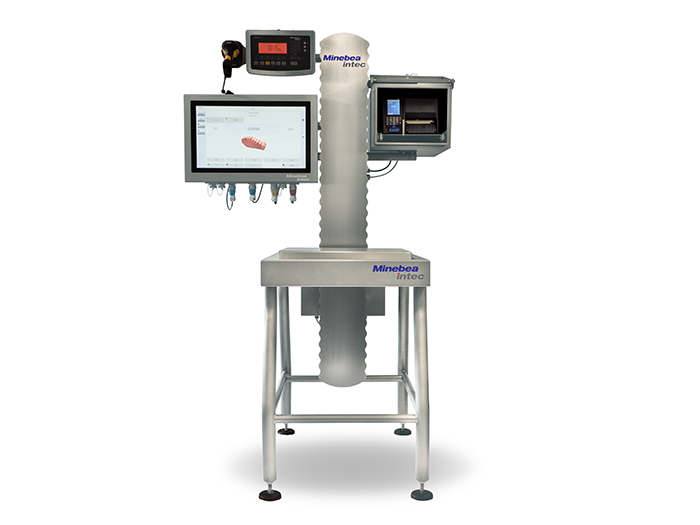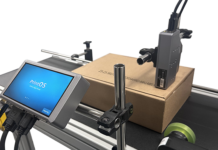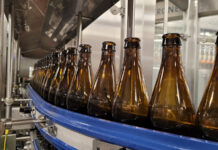PROMOTIONAL FEATURE
Mark Clifford, sales manager – UK & Ireland – at Minebea Intec, discusses the key role the manufacturer’s machines are playing in the labelling industry
Q) What are the latest innovations in Minebea Intec’s automated labelling portfolio?
A) We have seen a number of advancements recently, such as the addition of a new machine called the WPL-AR, which has been specifically designed to work with the Ravenwood Nobac range of machines. This is a full MID-approved weigh labeller with a Native Interface to the Ravenwood, meaning we treat it as one of our printers. All the label design and control sits with us, with no other software to manage in the middle.
The WPL-AR also offers a full supermarket COP reject bin with air pressure monitoring, reject confirmation, bin full, lockable bin and visual/audible alerts when any of the above failing brings the machine to a stop. It’s all contained in a single footprint design and uses an EMFC (Electro Mechanical Force Compensation) weigh cell to give quick and accurate weighing with less susceptibility to environmental issues like a sheer beam load cell machine would have. It also decreases the footprint substantially as the processing time is much quicker.
The Ravenwood Nobac range of linerless sleevers offers a wide selection of machine variants capable of labelling a vast array of products found in UK supermarkets. These machines can achieve application speeds exceeding 125 packs per minute, depending on product type and application. By integrating a coding machine, best-before or use-by dates, pricing, batch numbers, product weights and barcodes can also be printed. Linerless labels are an eco-friendly alternative to self-adhesive and eliminate the need for backing paper or liner, resulting in less waste and reduced carbon emissions during transportation.
Q) What different applications are these machines used for?
A) Our labelling systems are used in many different applications across the food industry, from standard top and bottom labelling to more advanced packaging as mentioned with the Ravenwood. From a user perspective, the WPL-A in particular gives a high level of versatility because it can do both fixed average weight, so the job of a checkweigher managing your T1’s and T2’s, but it can also do catchweight products as well. This can be combined with a full supermarket code of practice reject system, ensuring underweights and overweights are not making it to the shelves.
With the connection to a Minebea Intec metal detector, you can set up both machines by selecting the PLU on the WPL, giving you a more secure CCP with a 100% pack audit trail with the added function or recording all operations carried out by the operator. It also gives you one industry-leading, simple, multilingual (based on user login), intuitive user interface for several pieces of equipment – the weighing, labelling and metal detector. One set of training, one supplier for spares and service.
Q) Is demand for automated solutions increasing?
A) We have seen a real shift in the market due to the lack of staff. Whilst many companies would manually label packs at lower packs per minute rates, they are now moving to automation of this process as they can’t find people. Opting for labelling faster for a small part of the day means they can better utilise the staff they have. What we see from these customers is once the machine is installed for a specific application, they quickly realise that other labelling jobs can be completed on the machine as well. In some cases, connection to a factory system and sales order processing system allows them to automate the labeller based on what is ordered by their customers, populating and personalising the labelling process for each client but removing the setup on the line.
Weight and pack information is then fed back to the external system for traceability and invoicing, closing the automation loop.
Q) Where might Minebea Intec static labellers still be the preferred option?
A) We have customers in several parts of the food industry whose product and customer base have more bespoke requirements. For instance, catering butchers where each order for each customer is different and doesn’t lend itself well to the repartition and speed that an automatic machine offers.
These customers also have to comply to very stringent traceability aspects, all of which can be updated easily when using a static labeller. Similarly, slower, larger products like 20kg blocks of cheese; some customers prefer to have hands and eyes on the product to ensure there are no issues with packaging or quality. Saying that, we do also offer automatic machines that will do both the weighing and visual inspection as well.
Q) What sectors are your labelling machines most prevalent in?
A) As mentioned, there is a shift towards lower pack rate applications being automated, but the predominance is still higher speed, repetitive production of a single product for long periods. Products like cheese and fish being supplied to the large multiples. Likewise in the poultry industry where the process of a fresh protein product has been refined to the point that the production is very fast and weighing and labelling at this speed reliably is a necessity.

















